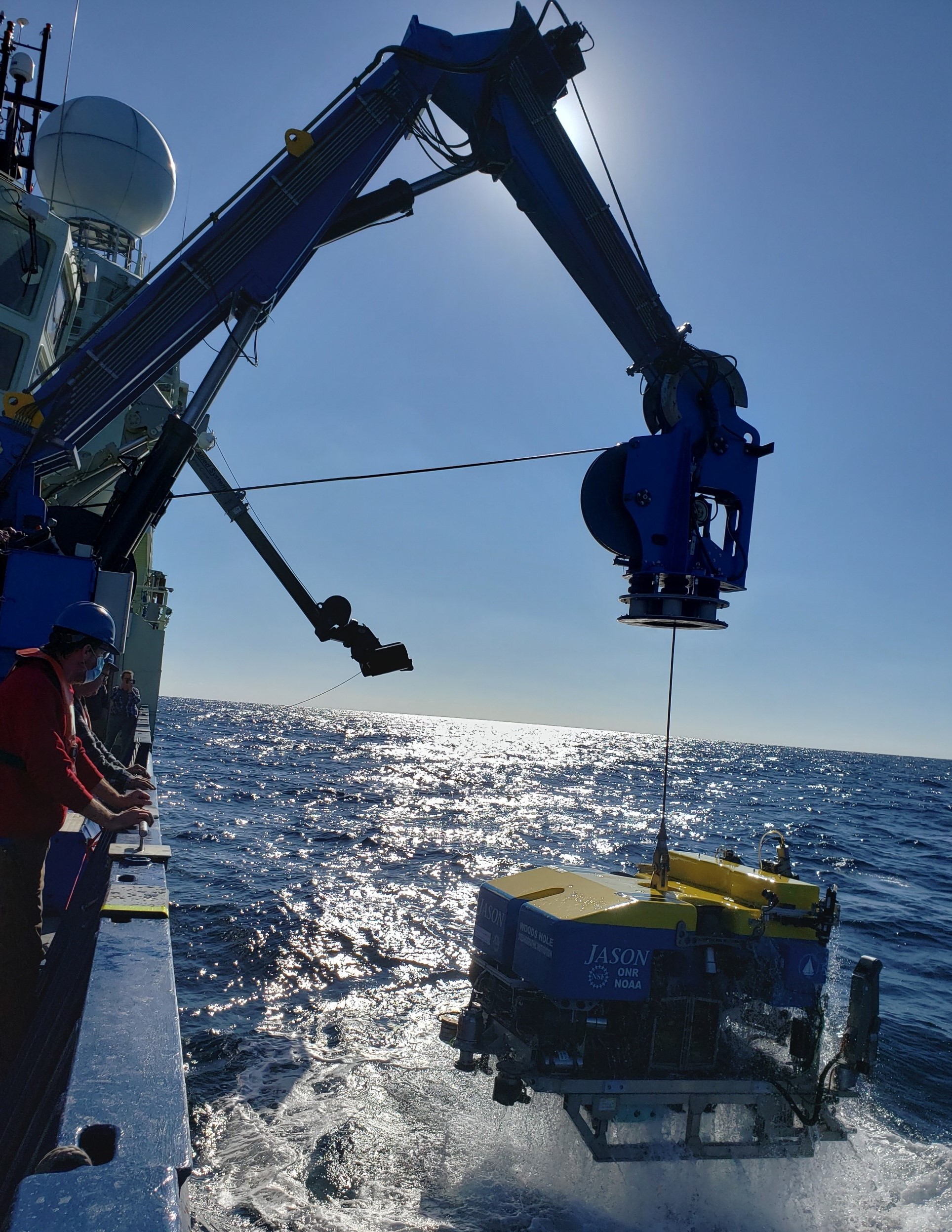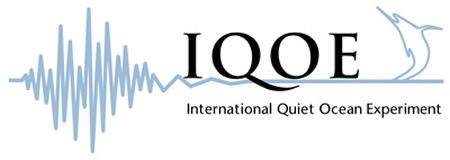Dec 18 Blog – Written by Fred Denton (ROV Jason Team)
As Carmen mentioned in one of the first posts of this cruise, the Jason system - all the gear that we bring onto a ship to provide the Jason ROV experience - is quite bulky and heavy. Yes, our 92 tons of gear require 7 semi-trucks to ship cross-country, say from a research ship in the Atlantic to a different research ship in the Pacific. So I feel compelled to explain what a large chunk of that bulk does. Roughly half of the weight that we bring on a ship is devoted to Jason's Launch and Recovery System or LARS. Our particular one-of-a-kind LARS consists primarily of an umbilical cable, an electric winch, and a hydraulic crane. Now I'll tell you a bit more about this Jason LARS, since its what I know best.

If you're not familiar with a LARS, then maybe you know your way around a fishing rod. Essentially a fishing rod-and-reel is a very small and simplified LARS, where the fishing line is the cable, the rod is the crane, the reel is the winch, and the lure is the ROV. Like a fishing lure, Jason can catch fish, but when we do, the fish go inside Jason and not the other way around. And we can watch and record 4K high resolution video of the moment the fish is caught - for Science.
The central piece of the LARS is the 5 kilometer long umbilical cable that keeps Jason tethered to the ship even when diving nearly 5 km deep. Everything Jason does is delivered through this one long cable: the kilowatts of electrical power, the gigabits of fiber-optic data delivering 4k video in real time from seafloor to our spacious control van on the ship, the tons of lifting force strong enough to safely hoist Jason's 5.5 tons of deep-sea science utility in and out of the water - even when the ship is rocking and rolling in large ocean swells.
The winch stores and can spool off the 5 km (9 tons) of the umbilical cable. When all 9 tons of the mostly steel cable are hanging off the ship with Jason at the end, the winch is powerful enough to haul it all back in - and not spend all day doing it.
The cable runs out of the winch, through the center of the crane making bends around wheels (called sheaves) and out the end of the crane. The end of the crane features the undeniably coolest part of the crane, which we call the docking head. When its time to pull Jason out of the water via the cable, like in the picture, Jason gets pulled up to and docks with the docking head. There is a very sturdy mechanism inside the docking head that latches to the top of Jason, docking the two securely together. At that point, Jason can be safely carried down to the deck of the ship by the crane. That, in a nutshell, is a Recovery. The reverse of this is a Launch.


